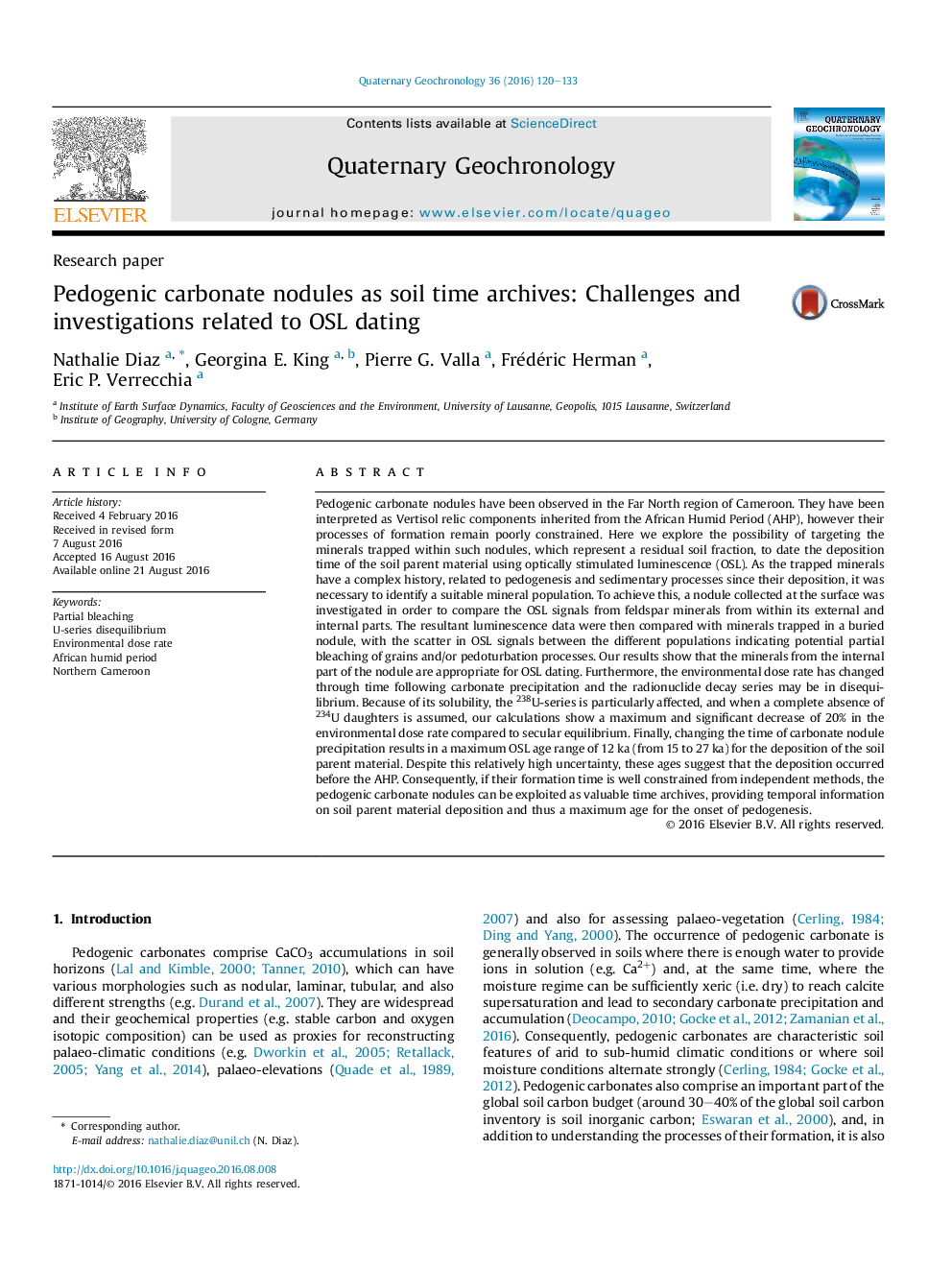| Article ID | Journal | Published Year | Pages | File Type |
|---|---|---|---|---|
| 6442495 | Quaternary Geochronology | 2016 | 14 Pages |
Abstract
Pedogenic carbonate nodules have been observed in the Far North region of Cameroon. They have been interpreted as Vertisol relic components inherited from the African Humid Period (AHP), however their processes of formation remain poorly constrained. Here we explore the possibility of targeting the minerals trapped within such nodules, which represent a residual soil fraction, to date the deposition time of the soil parent material using optically stimulated luminescence (OSL). As the trapped minerals have a complex history, related to pedogenesis and sedimentary processes since their deposition, it was necessary to identify a suitable mineral population. To achieve this, a nodule collected at the surface was investigated in order to compare the OSL signals from feldspar minerals from within its external and internal parts. The resultant luminescence data were then compared with minerals trapped in a buried nodule, with the scatter in OSL signals between the different populations indicating potential partial bleaching of grains and/or pedoturbation processes. Our results show that the minerals from the internal part of the nodule are appropriate for OSL dating. Furthermore, the environmental dose rate has changed through time following carbonate precipitation and the radionuclide decay series may be in disequilibrium. Because of its solubility, the 238U-series is particularly affected, and when a complete absence of 234U daughters is assumed, our calculations show a maximum and significant decrease of 20% in the environmental dose rate compared to secular equilibrium. Finally, changing the time of carbonate nodule precipitation results in a maximum OSL age range of 12 ka (from 15 to 27 ka) for the deposition of the soil parent material. Despite this relatively high uncertainty, these ages suggest that the deposition occurred before the AHP. Consequently, if their formation time is well constrained from independent methods, the pedogenic carbonate nodules can be exploited as valuable time archives, providing temporal information on soil parent material deposition and thus a maximum age for the onset of pedogenesis.
Related Topics
Physical Sciences and Engineering
Earth and Planetary Sciences
Geochemistry and Petrology
Authors
Nathalie Diaz, Georgina E. King, Pierre G. Valla, Frédéric Herman, Eric P. Verrecchia,
